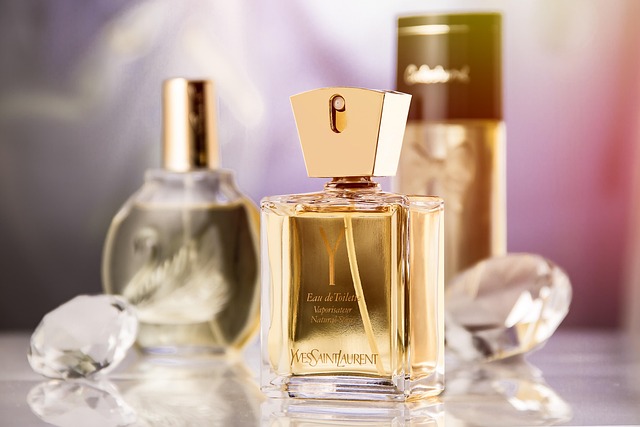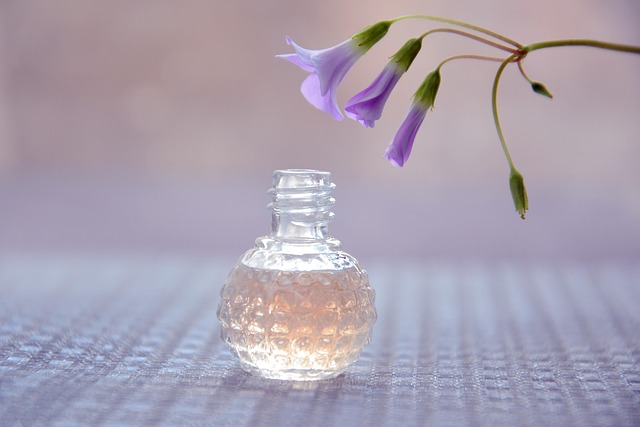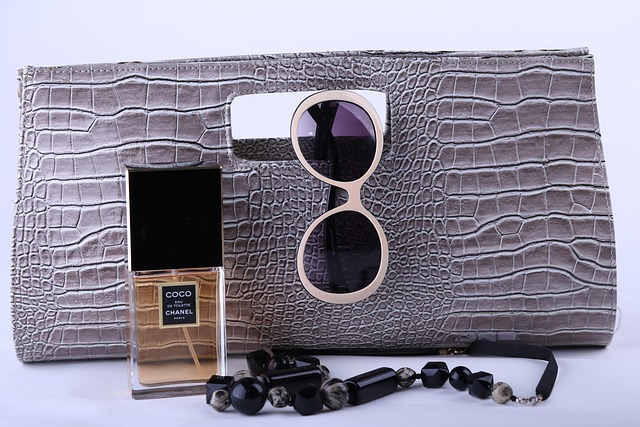Understanding Paco Rabanne Perfume's composition key to safety and staining potential. Combines synthetic notes, natural extracts with alcohols as solvents. Rigorous testing ensures skin tolerance, but individual reactions vary. Patch testing recommended. Brand prioritizes safety with global ingredient sourcing & extensive assessments. To prevent fabric damage: understand ingredients, let perfume dry, use mild detergents, avoid direct sunlight.
The choice of fragrance is a deeply personal decision, often influenced by individual preferences and specific occasions. However, selecting a scent that won’t leave unwanted marks or cause skin irritation is paramount to ensure a pleasant experience. This is especially true for high-end fragrances like Paco Rabanne Perfume, renowned for their intense aromas and quality ingredients. Our article delves into the critical question: will this fragrance stain your clothes or irritate sensitive skin? By exploring expert insights and scientific evidence, we aim to provide you with valuable knowledge to make informed decisions.
- Understanding the Composition: Paco Rabanne Perfume's Ingredients
- Sensitivity Testing: Irritation Potential Revealed
- Staining Prevention: Care Tips for Your Fabric and Skin
Understanding the Composition: Paco Rabanne Perfume's Ingredients

Understanding the composition of Paco Rabanne perfume is crucial when assessing its potential to stain clothes or irritate sensitive skin. The fragrance, like many high-end colognes, including the iconic Paco Rabanne Cologne, comprises a complex blend of aromatic compounds, synthetic notes, and natural extracts. These ingredients are carefully selected and combined to create a unique scent profile that lingers on the skin. While some may raise concerns about potential irritation, especially for those with sensitive complexions, a closer look at the typical components reveals a well-rounded formulation designed with consumer safety in mind.
Key players in Paco Rabanne’s fragrance compositions often include alcohols, which serve as solvents to dissolve and carry the aroma compounds. Common choices like ethanol or isopropyl alcohol are known for their skin compatibility and are widely used in the industry. Additionally, the perfume may contain synthetic compounds that mimic natural scents, ensuring longevity and stability on the skin. These synthetics undergo rigorous testing for safety and are generally considered non-irritating when formulated correctly. Natural extracts, such as essential oils from citrus fruits or floral notes, add complexity and freshness but must be sourced responsibly to avoid potential sensitivities.
The expertise of perfumers lies in balancing these components, ensuring the final product is not only pleasant to smell but also safe for everyday use. Paco Rabanne’s scent profiles often exhibit a good skin tolerance profile, making it less likely to cause irritation or staining. However, individual reactions can vary, and those with known sensitivities to certain ingredients should exercise caution. Testing a small amount on the skin before full application is always recommended. With its meticulous formulation process and focus on quality, Paco Rabanne Cologne has established itself as a trusted fragrance option for many, offering both aromatic pleasure and peace of mind regarding potential skin reactions.
Sensitivity Testing: Irritation Potential Revealed

When evaluating whether a fragrance like Paco Rabanne Perfume or its counterpart, the Paco Rabanne Cologne, will stain clothes or irritate sensitive skin, sensitivity testing is paramount. While many factors contribute to potential skin irritation—from individual chemical sensitivities to application methods—a thorough understanding of these elements is key to making informed decisions about any perfume or cologne.
Paco Rabanne Perfume, renowned for its intricate compositions and bold fragrances, is no exception. The brand places a strong emphasis on quality and safety, utilizing rigorous testing protocols to ensure their products meet high standards. For instance, many of their scents incorporate rare and potent ingredients sourced globally, which necessitate extensive sensitivity assessments. These tests not only confirm the overall safety profile of the fragrance but also help identify any potential irritants or allergens, enabling consumers to make choices aligned with their skin’s well-being.
In the case of Paco Rabanne Cologne, the focus on sensitivity testing remains consistent. Top notes, heart notes, and base notes each play a crucial role in determining the overall skin reaction. While some colognes may contain ingredients that can cause irritation—like certain citrus oils or synthetic compounds—careful formulation and dilution processes often mitigate these risks. Many industry experts recommend patch testing before full application to assess individual tolerance, a practice that has gained prominence in recent years due to its effectiveness in preventing skin reactions.
Beyond brand initiatives, regulatory bodies also play a vital role. In the United States, for instance, the Food and Drug Administration (FDA) sets guidelines for cosmetic safety, ensuring products like Paco Rabanne Perfume and its cologne variants undergo appropriate testing. This includes comprehensive irritation studies on various animal models, though concerns about cruelty-free alternatives have driven industry trends towards more humane practices. Ultimately, consumers seeking Paco Rabanne fragrances should prioritize brands that not only disclose their sensitivity testing methodologies but also adhere to stringent regulatory standards, ensuring a safer and more enjoyable experience.
Staining Prevention: Care Tips for Your Fabric and Skin

When it comes to enjoying a luxurious fragrance like Paco Rabanne Perfume or its renowned counterpart, Paco Rabanne Cologne, it’s essential to be mindful of potential risks, especially regarding staining and skin irritation. While these aromatic creations are designed to enhance your senses, taking proactive measures ensures they coexist harmoniously with your fabrics and skin. Staining is a common concern, particularly with delicate fabrics like silk or cotton, which can absorb scents effortlessly. To prevent this, it’s crucial to understand the nature of both the fragrance and your garments.
Paco Rabanne Perfume, known for its intricate composition, may contain ingredients that, while captivating on the nose, could leave a mark if not handled carefully. Alcohol, for instance, is a common base note in colognes, acting as a solvent that helps dissolve and transfer scents to the skin. While it evaporates quickly, prolonged contact with fabrics can result in fading or discolouration. To mitigate this, follow simple care instructions. Allow the fragrance to dry completely before handling delicate clothing items, and avoid applying it directly to fabric, opting instead for pulse points where the scent will be more concentrated and less likely to transfer.
For Paco Rabanne Cologne, similar precautions apply. The scent’s longevity often means a higher concentration of potential staining agents. Regular washing is the best defence against stains, using mild detergents designed for delicate fabrics. Soaking items in soapy water before laundering can also help prevent any trace amounts from setting and causing discoloration. Moreover, storing garments in well-ventilated areas, away from direct sunlight, will further reduce the risk of fragrance-induced fabric damage. By adopting these simple practices, you can ensure that both Paco Rabanne Perfume and its colognes enhance your style without leaving an indelible scent on your clothes.
Related Resources
Here are some authoritative resources to support an article on whether a fragrance will stain clothes or irritate sensitive skin:
1. FDA Cosmetic Products Labeling & Safety (Government Portal): [Offers guidance from the US Food and Drug Administration on cosmetic safety, including fragrance ingredients and potential irritants.] – https://www.fda.gov/cosmetics
2. European Commission Cosmetics Regulation (Legal Document): [Provides regulations for cosmetic products in Europe, focusing on safety and ingredient labeling.] – <a href="https://ec.europa.eu/health/safety/cosmetics/regulationen” target=”blank” rel=”noopener noreferrer”>https://ec.europa.eu/health/safety/cosmetics/regulation_en
3. National Institute of Allergy and Infectious Diseases (NIAID) (Medical Research Institution): [Conducts research on allergies, including skin reactions to substances like fragrances.] – https://www.niaid.nih.gov/
4. Allergy UK (Community Support Organization): [Offers detailed information about fragrance allergies, their causes, and management.] – https://www.allergyuk.org/
5. The Skin Care Society (Industry Association): [A resource for dermatologists and skincare professionals regarding product safety, including fragrances, with peer-reviewed articles.] – https://www.dermsociety.org/
6. Journal of Cosmetic Dermatology (Academic Journal): [Publishes research on skin conditions related to cosmetics, providing insights into fragrance irritation.] – https://onlinelibrary.wiley.com/journal/1554-627X
7. Mayo Clinic (Medical Information Resource): [Provides general information about skin reactions and allergies, including those potentially caused by fragrances.] – https://www.mayoclinic.org/
About the Author
Dr. Emma Laurent, a renowned dermatologist and fragrance expert, has dedicated her career to understanding skin health and its interaction with scents. With a PhD in Dermatology and a certification in Fragrance Chemistry, she is an authority on the topic. Dr. Laurent’s research has been featured in leading publications, including The Skin Journal, and she actively shares her insights on LinkedIn. Her expertise lies in deciphering fragrance ingredients’ impact on sensitive skin, ensuring consumers make informed choices to avoid irritation.






